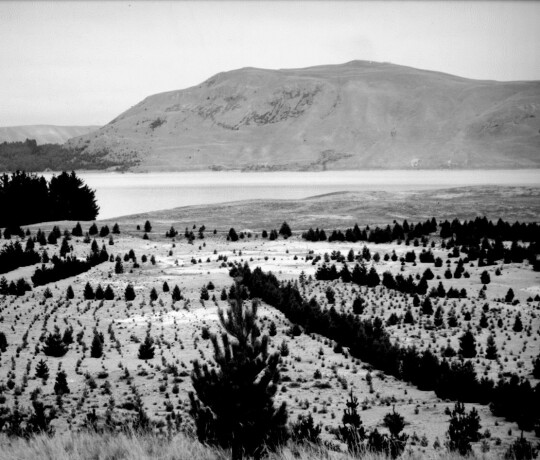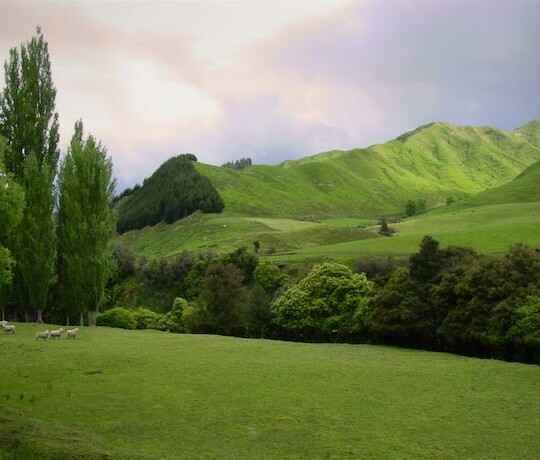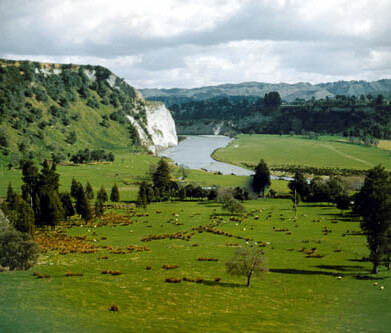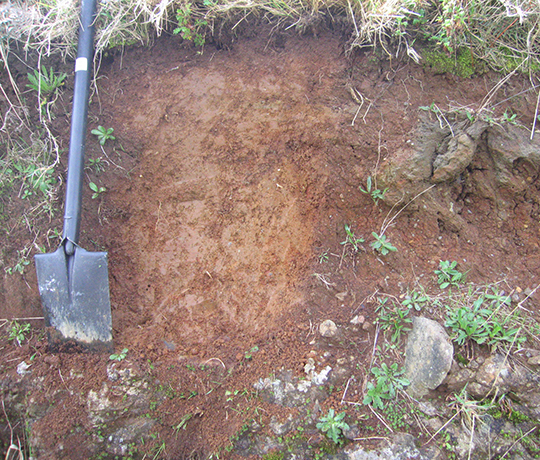An introduction to LUC
Land Use Capability (LUC) is a land mapping and classification system.
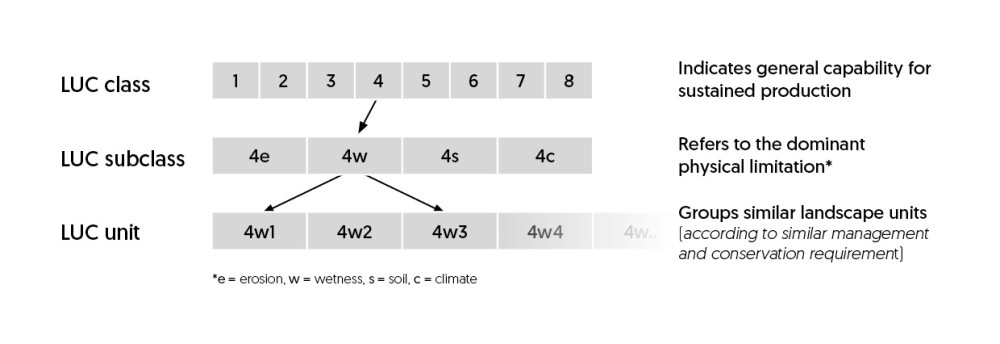
LUC mapping used national mapping standards and inventory classifications. It was performed on the basis of field mapping and assessment, extensive aerial photo interpretation and office checks, map production, digital entry and coding, always following strict quality control standards.
The LUC classification system has three components arranged in a hierarchical structure: LUC Class, LUC Subclass, and LUC Unit.
Each component is represented by a number or symbol and the information relevant to each LUC unit is presented in an extended legend that accompanies the map / data.
Figure 1 illustrates the relationship between the three components of the LUC-CS. For specific details see Section 3 of the Land Use Capability Survey Handbook (3rd Edition).
The LUC components in more detail:
The LUC Class is an assessment of the land’s capability for use, while allowing for its physical limitations, and its versatility for sustained production. There are eight classes with limitations to land use increasing, and versatility for land use decreasing, from LUC Class 1 to LUC Class 8.
LUC Classes 1 to 4 are suitable for arable cropping (including vegetable cropping), horticultural (including vineyards and berry fields), pastoral grazing, tree crop or production forestry use. Classes 5 to 7 are unsuitable for arable cropping but are suitable for pastoral grazing, tree crop or production forestry use, and in some cases vineyards and berry fields. The limitations to use reach a maximum with LUC Class 8. Class 8 land is unsuitable for sustainable grazing or production forestry and is best managed for catchment protection and/or conservation or biodiversity.
The LUC Classes in more detail:
- LUC Class 1: Arable. Most versatile multiple-use land, minimal limitations, highly suitable for cropping, viticulture, berry fruit, pastoralism, tree crops and forestry.
- LUC Class 2: Arable. Very good multiple-use land, slight limitations, suitable for cropping, viticulture, berry fruit, pastoralism, tree crops and forestry.
- LUC Class 3: Arable. Moderate limitations, restricting crop types and intensity of cultivation, suitable for cropping, viticulture, berry fruit, pastoralism, tree crops and forestry.
- LUC Class 4: Arable. Significant limitations for arable use or cultivation, very limited crop types, suitable for occasional cropping, pastoralism, tree crops and forestry. Some Class 4 is also suitable for viticulture and berry fruit.
- LUC Class 5: Non-arable. Highly productive pastoral land, not suitable for crops but only slight limitations to pastoral, viticulture, tree crops and forestry.
- LUC Class 6: Non-arable. Slight to moderate limitations to pastural use, suitable for pasture, tree crops and forestry and in some cases vineyards. Erosion is generally the dominant limitation.
- LUC Class 7: Non-arable. Moderate to very severe limitations to pastoral use. High-risk land requiring active management to achieve sustainable production. Can be suited to grazing with intensive soil conservation measures but more suited to forestry.
- LUC Class 8: Very severe to extreme limitations to all productive land uses, arable, pastoral or commercial forestry. Suitable for erosion control, water management and conservation.
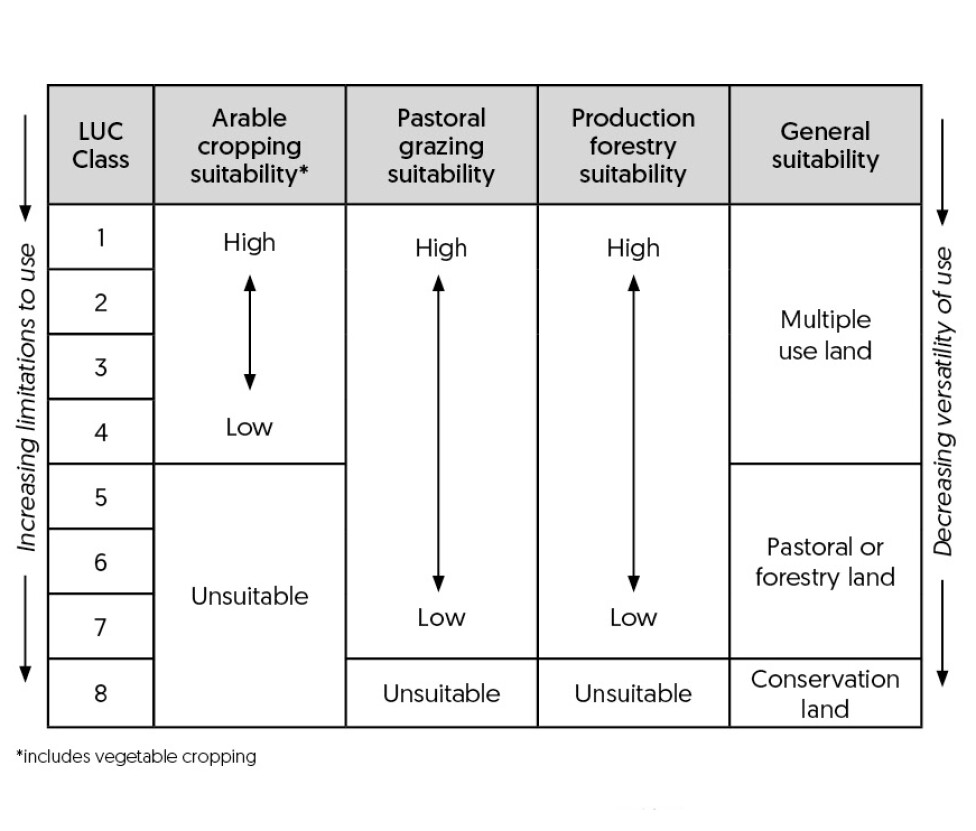
The LUC Subclass is a subcategory of the LUC Class through which the main kind of physical limitation or hazard is identified. LUC subclass can be expressed as a question, what is the single most important factor that is currently limiting sustainable production on this land? Four limitations are recognised:
- ‘e’ erodibility – where susceptibility to erosion is the dominant limitation.
- ‘w’ wetness – where a high water table, slow internal drainage, and/or flooding constitutes the dominant limitation.
- ‘s’ soil – where the dominant limitation is within the rooting zone. This can be due to shallow soil profiles, subsurface pans, stoniness, rock outcrops, low soil water holding capacity, low fertility (where this is difficult to correct), salinity or toxicity.
- ‘c’ climate – where the climate is the dominant limitation. This can be summer drought, excessive rainfall, unseasonal or frequent frost and/or snow, and exposure to strong winds or salt spray.
The LUC Unit is the most detailed component of the LUC classification. LUC Subclasses can be subdivided into several LUC Units. LUC Units group together areas where similar land inventories have been mapped, which require the same kind of management, the same kind and intensity of conservation treatment, and are suitable for the same kind of crops, pasture, or forestry species, with similar potential yields. LUC Units are identified by numers at the end of the LUC code.
Detailed LUC unit descriptions can be found in the extended legends (National and Regional).
An extended legend is an extension of the map legend. It summarises inventory description by each LUC unit, and typically provides supplementary information regarding land qualities and management consideration in a form easily understood by users.
Extended legends provide a framework for consistent allocation and ordering of LUC into units and suites through a series of steps commencing with understanding landforms, rock types and soils. Units are arranged in suites within this hierarchy of landform, rock type and soils which guide the allocation of LUC to units based on the inventory (See section 3.5 of the LUC handbook).
The legend describes the general nature of each unit, including a summary of land resource inventory, climate, land use and other factors influencing land use capability. Soil conservation and land management requirements are outlined together with its suitability for cropping, pastoral use, production forestry and watershed protection.
Within extended legends, LUC units are arranged (within LUC sub-classes) in orders of decreasing versatility and increasing degree of limitation to use (e.g. 7e5 would have a higher use capability than 7e8 but not as high as 7e2).
The New Zealand Land Resources Inventory (NZLRI) mapping project of the 1970s and 1980s mapped LUC regionally. Although data were stored in an earlier Geographic Information System (GIS) the main method of spreading the information was via paper maps (NZLRI worksheets).
The regions were defined at the time of mapping and do not necessarily reflect modern regional government boundaries. This meant that LUC units that have the same inventory but occurred in different regions at the time of mapping were not guaranteed to have the same LUC unit code. Small areas with a LUC unit rare on one side of a regional boundary may be lumped in with a similar more common unit which may be just across the boundary.
The regional classification was divided into 12 ‘LUC regions’, 11 in the North Island and one for the South Island under the 1st Edition NZLRI mapping. This changed for the 2nd Edition as Marlborough in the South Island was separated to its own regional classification. Each regional classification uses its own slightly different classification at the unit level (e.g. 2w1 in one region may not be the same as a 2w1 from another region).
A standardised National Land Use Capability extended legend, developed by Ian Lynn correlates, amalgamates, and rationalises the most up to date 1st and 2nd Editions regional LUC units and provides a single LUC unit description and coding applicable across the whole country.
The latest edition of the NZLRI layer includes the new legend. Attributes include original LUC units codes and unit descriptions so that users more familiar with original regional codes and North Island correlations can track the pedigree of units from old to new codes and descriptions.
More information on the Land Use Capability Classification can be found in Section 3 of the Land Use Capability Survey Handbook (3rd Edition) on pages 48 to 89.
If using the LRIS Portal to access LUC data the relevant extended legend or LUC unit description will contain this information.
